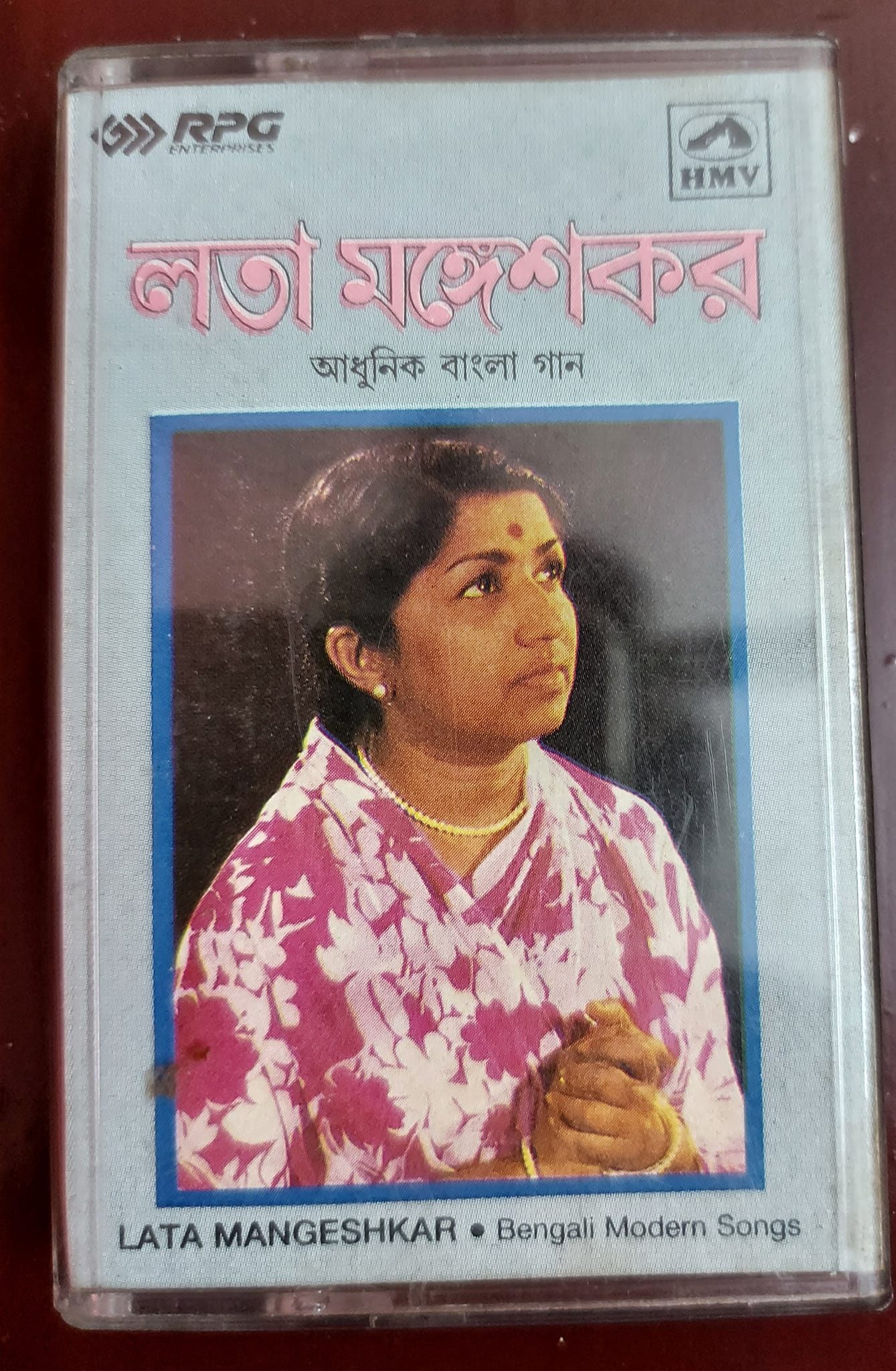We didn't have any records of Lata Mangeskar at home in the 80s, but cassettes there were aplenty. I heard them incessantly on our PERK cassette-player. I would 'Rewind' the songs so many times to learn the lyrics, sometimes only for split seconds to get this or that detail right, that it was a miracle the button didn't go bust.
The Lata cassette that I listened to the most was of her Bangla 'adhunik', non-playback songs. It had the face of an impossibly young singer, with the trademark saree wrapped around her like a shawl and red bindi on her forehead. Side A began with 'akash pradip jwale', side B with 'Tiger Hill'. I simply can't recall a favourite; I loved them all with the kind of jealous, possessive love that only pre-pubescents/early teens are capable of. But I can list the names of songs they had - a shortened list, though - when I bought a second cassette of the same collection a couple of years later, after losing the first.
It was a poor replacement: the songs were less, the picture on the cover was different, and it looked too new. Without the smudge of my fingers on the glass and the stain of dust clinging to its humid surface, it also felt alien. More so because we had already transitioned to a BPL cassette-cum-record player - a double-decker - where I could record my favorite songs simultaneously while listening to them. The new cassettes I bought, I listened to with great excitement in it, but the old ones just didn't feel right.
A few years later, I would use the device compulsively to create my own collections of solos and duets, and send them to a gentleman I missed terribly, living far away. I also sent him common favourites of ours - ABHIMAAN being one of them.
It had struck me while watching the film on TV a couple of years before, that ABHIMAAN was the only film (I knew of) where Lata had sung for a singer-character. The story was actually a spin-off on the life of Ravi Shankar and Annapurna Devi; but Jaya Bhaduri's Uma, similarly wrapped in a saree, with a big bindi on her forehead (which is itself the subject of one of the most beautiful songs in the film), became for me the closest I could get to a fictionalized version of the legendary singer.
During the same college years, I had made some mental notes, comparing a Hindi film song and an English poem I loved -- the 17th century carpe diem classic, 'To His Coymistress' by Andrew Marvell and the Lata solo, 'Lag ja gale, ke phir yeh haseen raat ho na ho'.
The song is a coy invitation to love, in which the lovers maintain social distance for most of the song (while the beloved is all sighs and tears) and come together for a rather diffident embrace only at the end. But forget the "picturization" for a moment. (The actors are, in any case, not my favourites). The point is: the beloved is urging the lover to make the most of the beautiful night, but seducing with elegance (as only Sadhana can). It struck me how controlled that articulation is, compared to the testosterone-charged urgency of the lover in Marvell's poem, who invokes the inevitability of decay and death (the macabre aspect of it especially) to drive his point home.
More than two decades later, in my mid-40s, while listening to the songs of GUIDE, I realized that 'Aaj phir jeene ki tamanna hain, aaj phir marne ka irada hain' is perhaps the only play-back song of Lata's (once again, that I know of, in Hindi or Bangla) where she is celebrating a moment of liberation in a woman's life. Waheeda Rahman's Rosy looked charmingly giddy in her new-found freedom, while lip-syncing it. This song is actually not my favourite in the film; the brooding Rafi numbers expressing disillusionment and betrayal in love are far more powerful in composition. But one can't deny the effervescence of the song.
I am familiar with only a few hundred of the many thousands of songs that Lata sang over eight decades. And today, I could recall only a few dozen. Of them, an overwhelming majority are love songs. Even leaving aside the duets with Kishore, Rafi and Mukesh, and the many songs with both male and female versions, her solos have mostly to do with love -- being happy or fearless in it (‘pyar kiya to darna kya’); feeling grateful for it (‘aap ki nazron ne samjha’); waiting for or missing the lover (‘rulake gaya sapna mera’, ‘tarap yeh din raat ki’); mourning the loss of a possibility (‘chalte chalte yuh hi koyi mil gaya tha’); to give just a few random examples.
The songs speak to me in new ways as I grow older. I have never tired of them. I never will.
PS:
I can't attach photos & videos together in a single post. One video cancels out all the rest. Hence I settled for images for the songs I've mentioned. Very frustrated about that...


